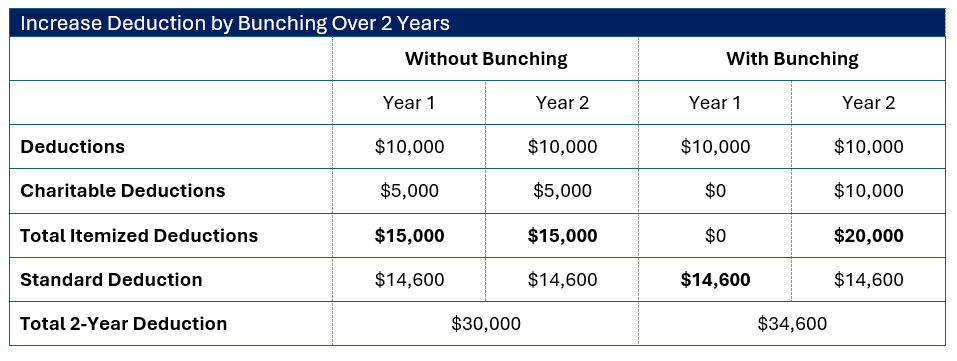Best Ways to Give to Charities Considering the Tax Implications of the Tax Cuts and Jobs Act

The Tax Cuts and Jobs Act (TCJA) of 2017 brought significant changes to the tax code, impacting the deductibility of charitable donations. Understanding these changes can help you maximize your charitable contributions while optimizing your tax benefits.
Impact of the Tax Cuts and Jobs Act on Charitable Donations
One of the most notable changes introduced by the TCJA was the near doubling of the standard deduction. For individual filers, the standard deduction increased from $6,500 to $12,000, and for married couples filing jointly, it rose from $13,000 to $24,000. This change significantly reduced the number of taxpayers who itemize their deductions, dropping from 46.5 million in 2017 to roughly 18 million in 2018. As a result, fewer taxpayers can benefit from the tax incentives associated with charitable donations.
Despite these changes, charitable giving has remained robust. In 2023, Americans contributed nearly $556 billion to charitable causes. However, to maximize the tax benefits of charitable giving under the new tax law, donors need to be strategic. Here are some of the best ways to give to charity considering the TCJA’s implications:
Deduction Bunching
Deduction bunching involves concentrating charitable donations into a single tax year to exceed the standard deduction threshold, allowing you to itemize deductions for that year. For example, instead of donating $5,000 annually, you could donate $10,000 every other year. This strategy can help you surpass the standard deduction in the year you make the larger donation, enabling you to itemize and benefit from the charitable deduction.
For example, if Susan has itemized deductions of $10,000 and decides to give $5,000 to charity, her total itemized deductions will be $15,000. Susan would still be better off itemizing her deductions because her itemized deductions are $400 higher than the 2024 standard deduction of $14,600. However, by implementing the “bunching” method and combining two years of of charitable contributions into one year, she can automatically receive the standard deduction of $14,600 in one year and then make tow years of charitable contribution the next year, which would further increase his itemized deductions in that second year.

Qualified Charitable Distributions (QCDs)
For individuals aged 70½ or older, Qualified Charitable Distributions (QCDs) offer a tax-efficient way to donate to charity. QCDs allow you to transfer up to $100,000 per year directly from your Individual Retirement Account (IRA) to a qualified charity. These distributions count towards your required minimum distributions (RMDs) but are not included in your taxable income. This means that a taxpayer is able to get the benefits of making a charitable donation regardless of whether or not they choose to itemize deductions.
Donor-Advised Funds (DAFs)
Donor-Advised Funds (DAFs) are another effective tool for charitable giving. A DAF allows you to make a charitable contribution, receive an immediate tax deduction, and then recommend grants from the fund to your favorite charities over time. This approach provides flexibility in your giving and can be combined with deduction bunching to maximize tax benefits. By contributing a larger amount to a DAF in a single year, you can itemize deductions for that year and support charities over multiple years.
The Tax Cuts and Jobs Act has changed the landscape of charitable giving, but with some strategic planning, you can continue to support your favorite causes while optimizing your tax benefits.

